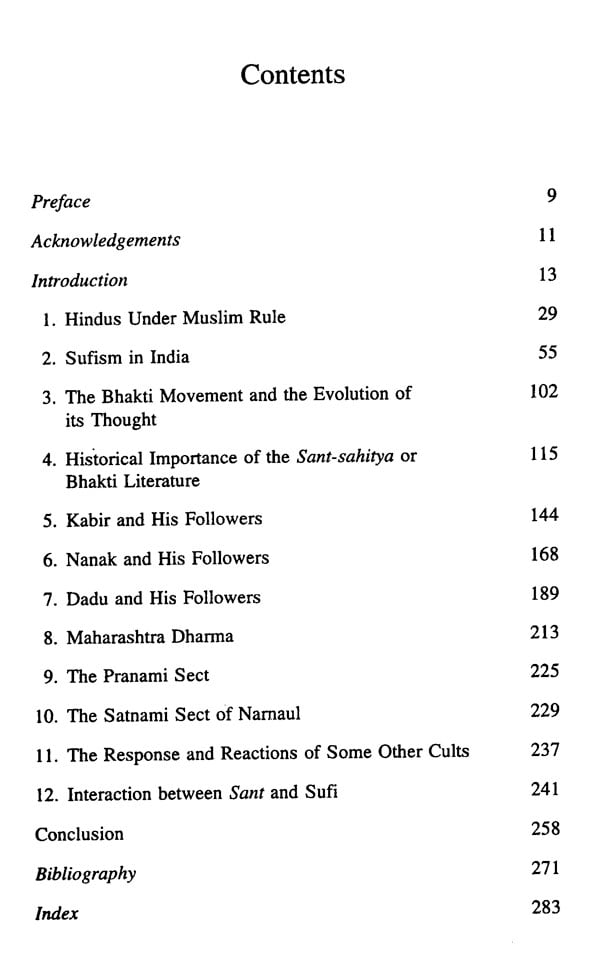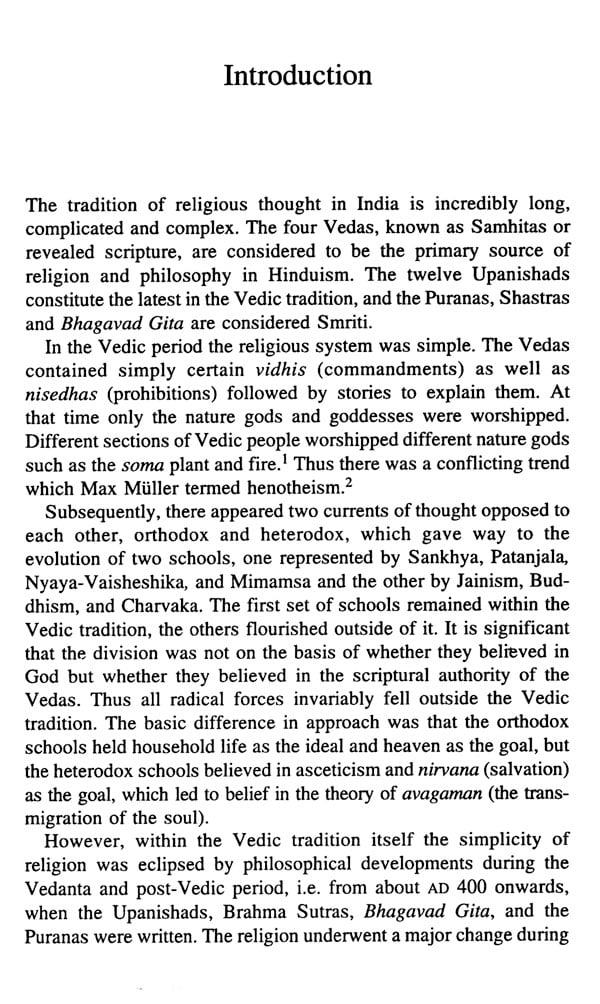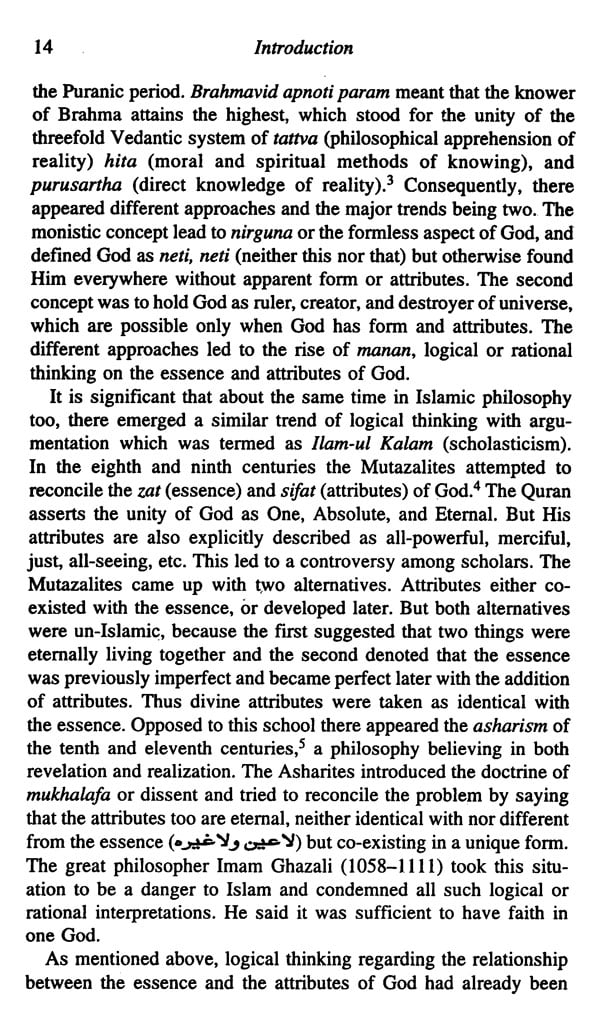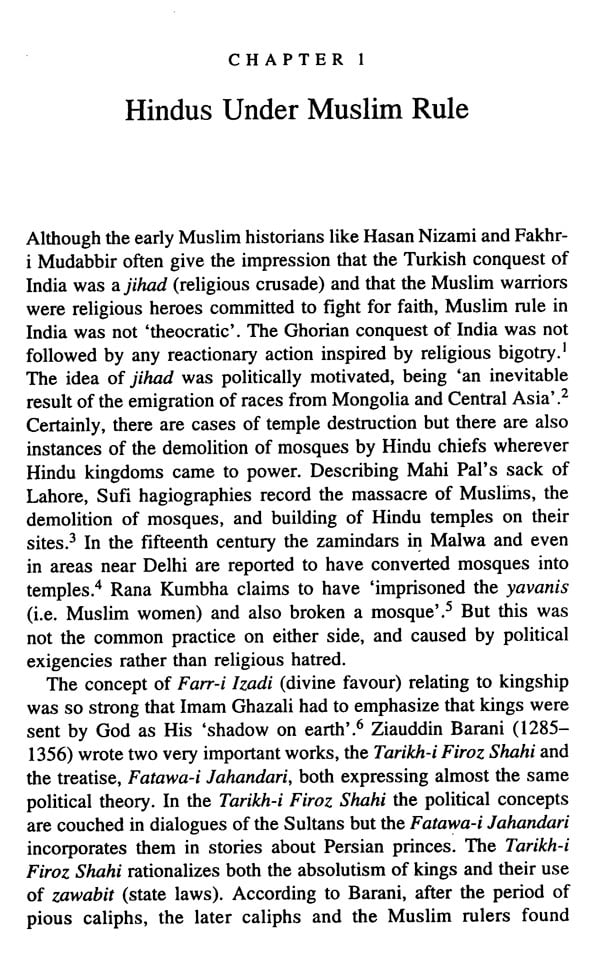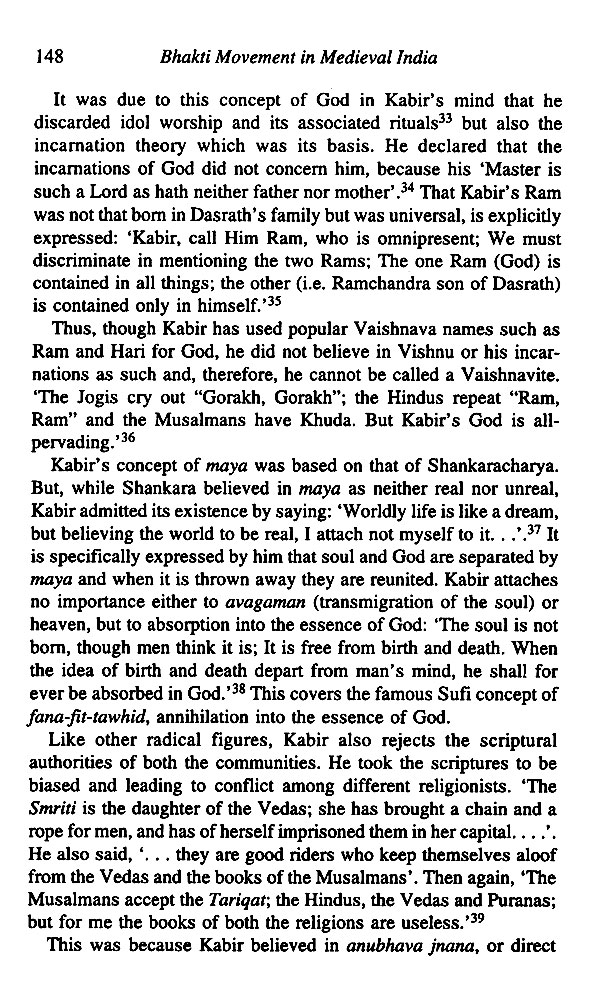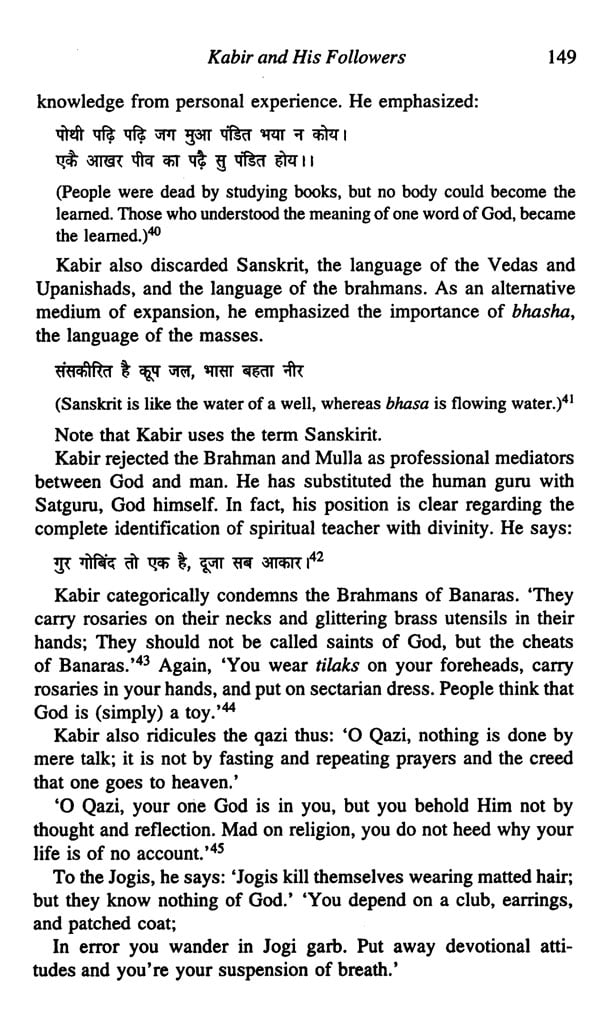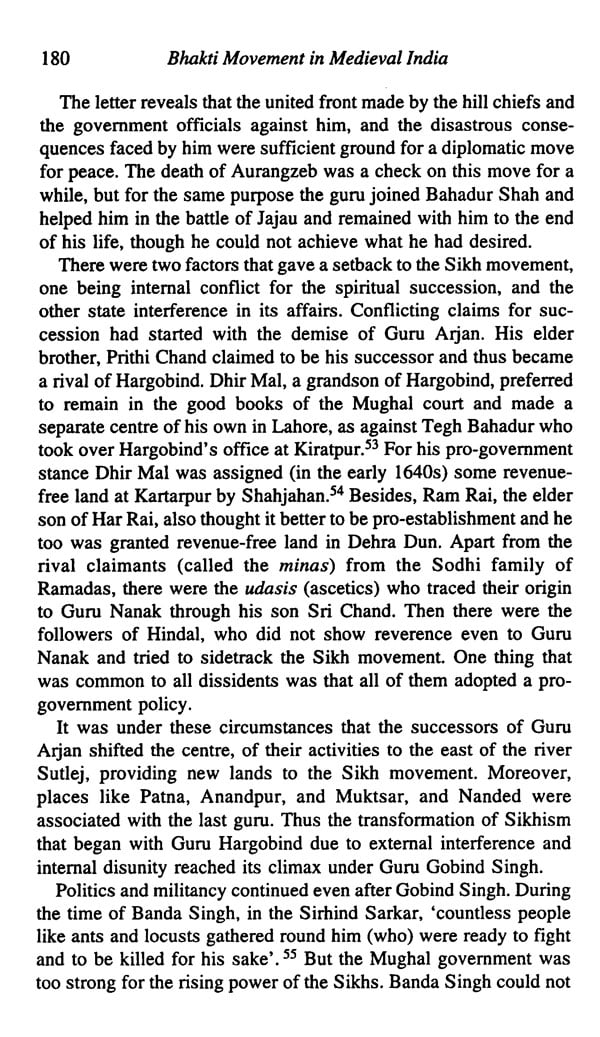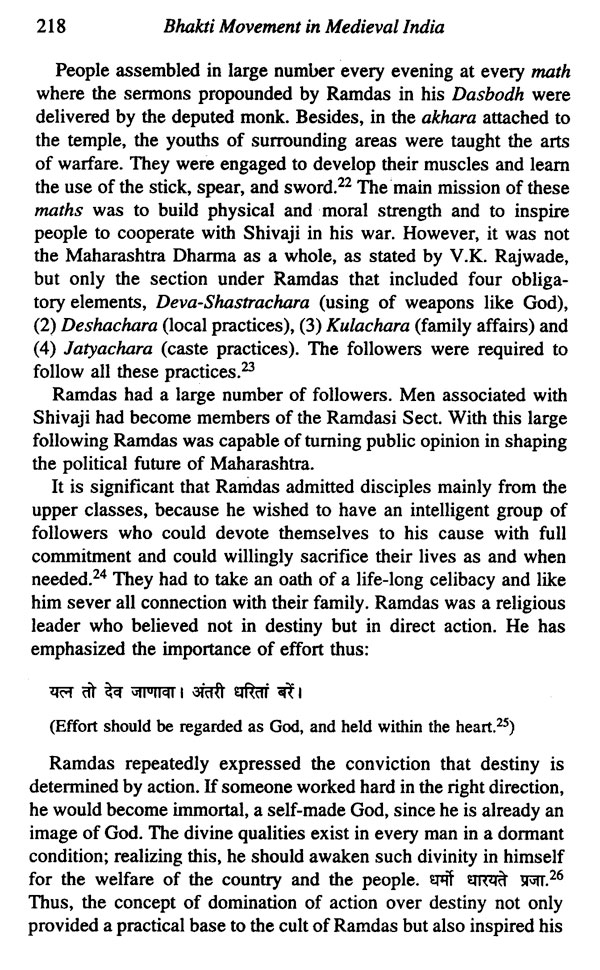
Bhakti Movement in Medieval India (Social and Political Perspectives)
Book Specification
| Item Code: | NAZ820 |
| Author: | Shahabuddin Iraqi |
| Publisher: | Manohar Publishers and Distributors |
| Language: | English |
| Edition: | 2009 |
| ISBN: | 9788173048005 |
| Pages: | 296 |
| Cover: | HARDCOVER |
| Other Details | 9.00 X 5.50 inch |
| Weight | 520 gm |
Book Description
This well documented study brings into focus the picture of Medieval Indian society in different ways-the nature of relationship between the state and the Hindus; the mutual understanding between members of the two communities; different trends of Bhakti thought and movement and the interaction between the thoughts and practices of different Sufi orders and Bhakti cults. The detailed account of the literature of Bhakti Saints provided by the author constitutes a veritable treasure trove of source material on different aspects of medieval Indian history. Besides, an attempt has been made to trace the evolution of the Nirguna aspect of Bhakti movement with its aims and objectives.
The volume offers an in-depth study of the conflicting as well as cordial relationship of the leaders of different schools of Bhakti thought with the state and their approach to society, politics and administration. It also analyses the circumstances that led some of the spiritual movements to assume political and even a militant character. Much interesting evidence has been explored from the sources hitherto unknown in the preparation of this book. The work will prove to be a valuable contribution to medieval Indian historical studies.
It is generally understood that the bhakti saints were peace loving reformers of their respective communities. The fact is, however, that the Bhakti movement that emerged in northern India in the beginning of the fifteenth century comprised two schools, Saguna Bhakti and Nirguna Bhakti. Saguna Bhakti leaders like Tulsidas were revivalist in the sense that they stood for adherence to traditional Hinduism and the varna system. In contrast, Nirguna Bhakti led by non-conformist men like Kabir, Nanak, and Dadu formed a spiritual movement outside the institutional fold of Hindusim.
Most of the Nirguna Bhakti saints who came to prominence in northern and central India in the fifteenth to seventeenth centuries and were born Hindu or Muslim, belonged to the lower strata of society. They adhered neither to Hindusim nor to Islam and rejected the whole system and all norms of institutionalized religion. They dealt with the practical aspects of human life, having certain aims and objectives in mind. Their voices of protest were, therefore, not confined to religious issues but extended to socio-economic problems and even to the political and administrative sphere. A number of such saints became political and at times even resorted to armed resistance against their rulers for the attainment of their political ends.
My study offers an analysis of different trends of bhakti thought and movement and their impact on society. This book consists of twelve chapters and a conclusion. The first chapter deals with the attitude of the Muslim rulers, nobles, and ulama towards all categories of Indian people; the second depicts the position of different Sufi orders, their institutional organization, and their practices. The third chapter is devoted to the evolution of bhakti thought and the nature and character of the movement in northern India from the fifteenth century onwards. Chapter 4 provides a detailed description of bhakti literature in historical perspective.
Book’s Content and Sample Pages